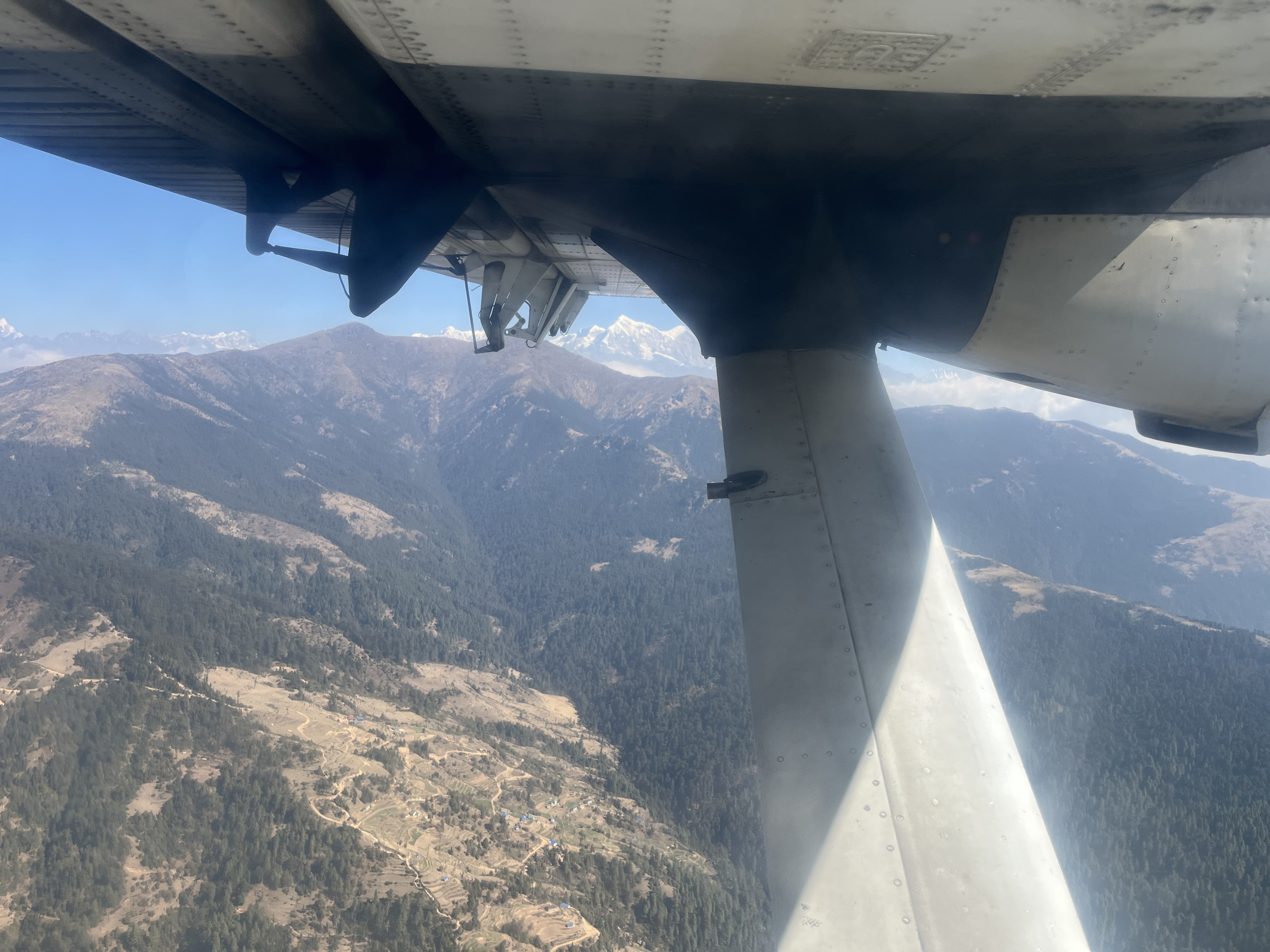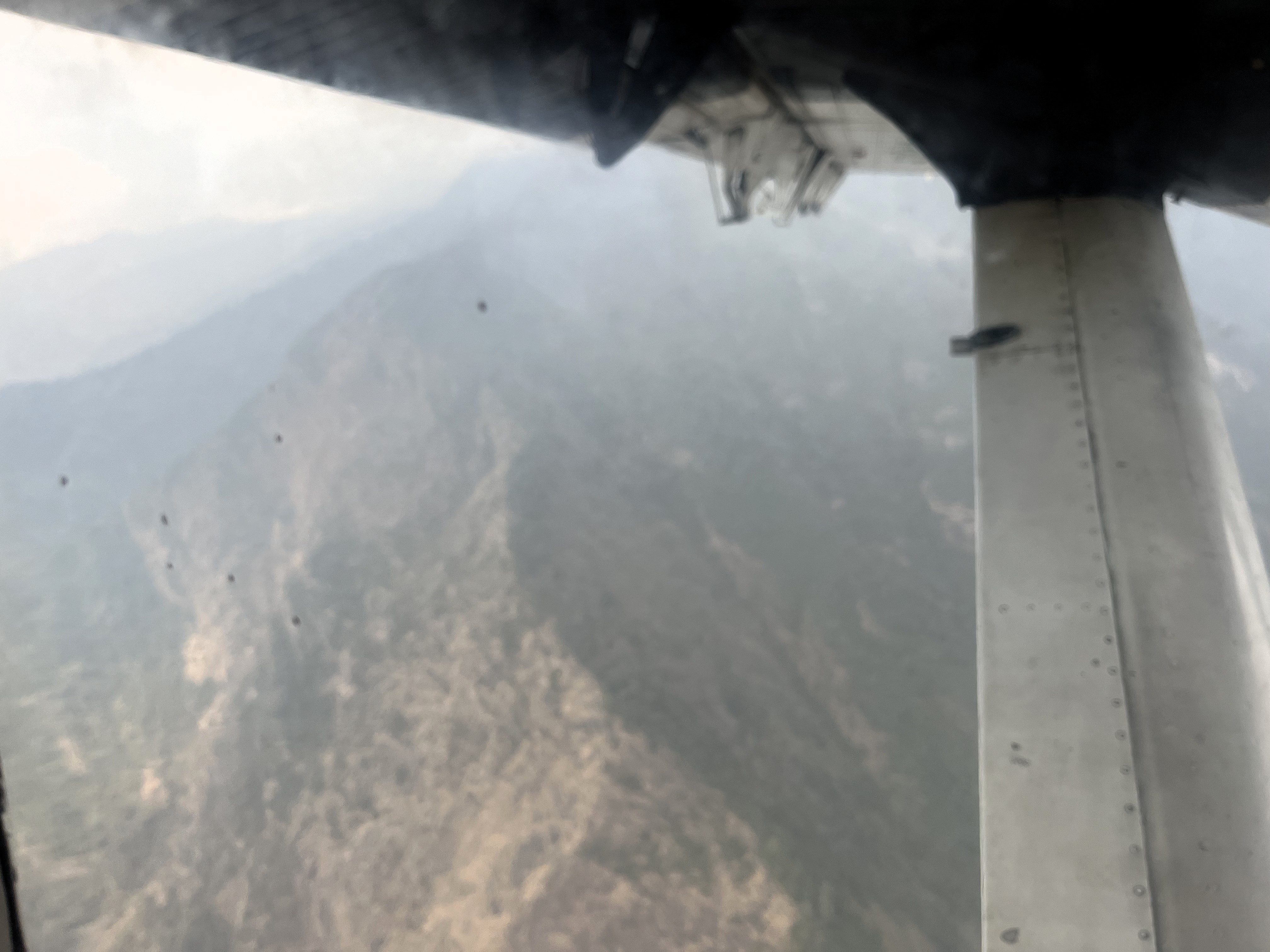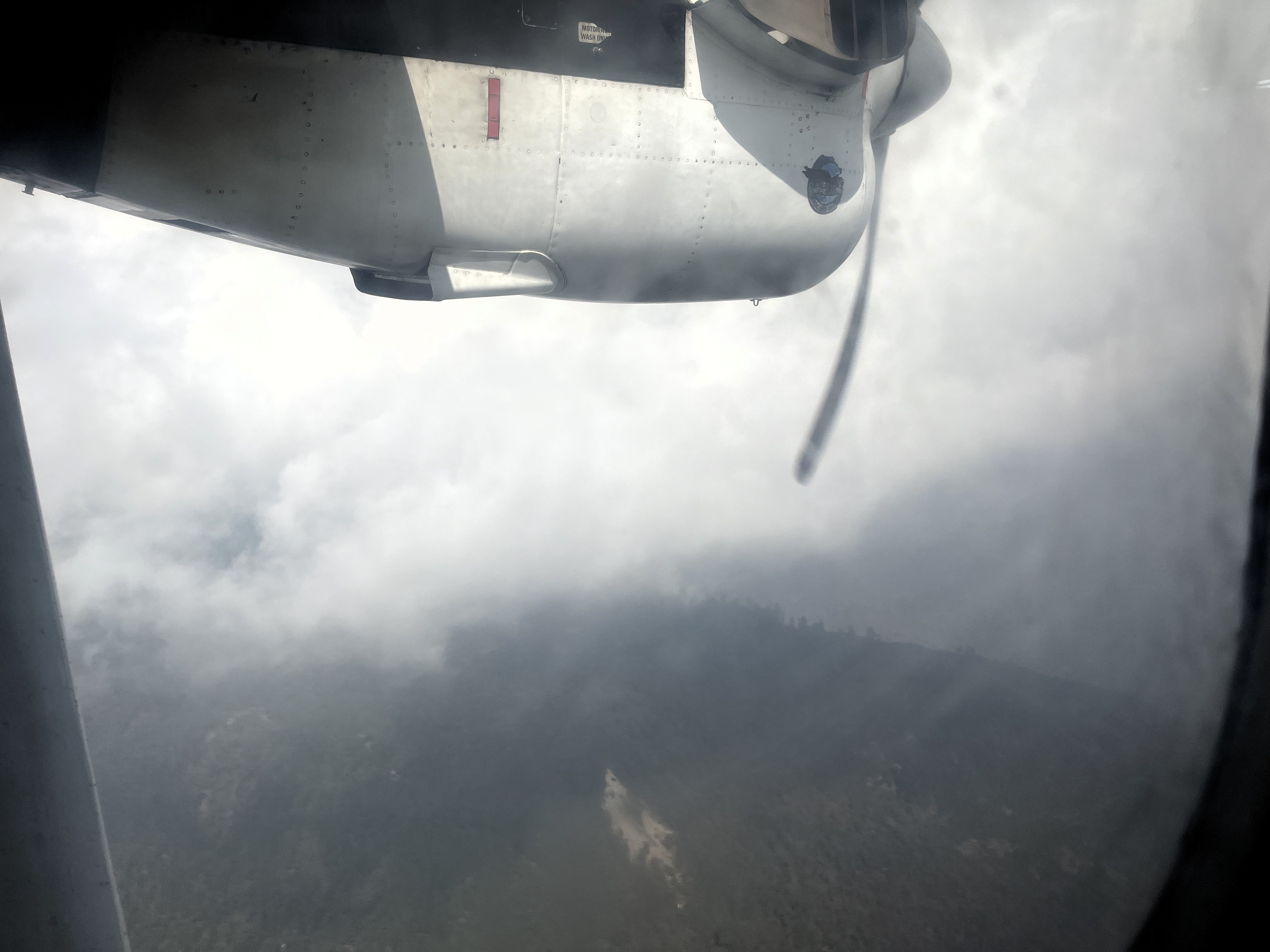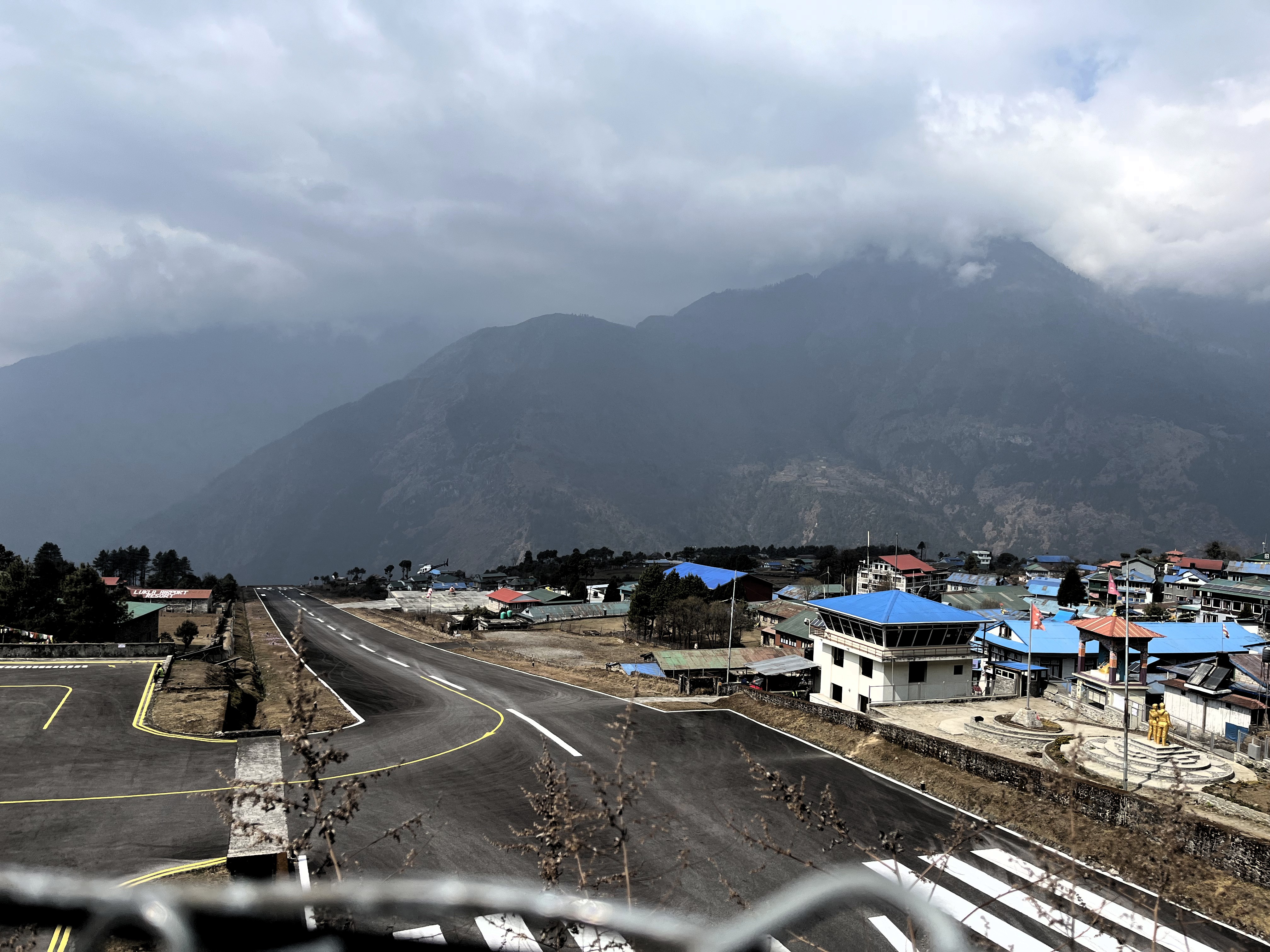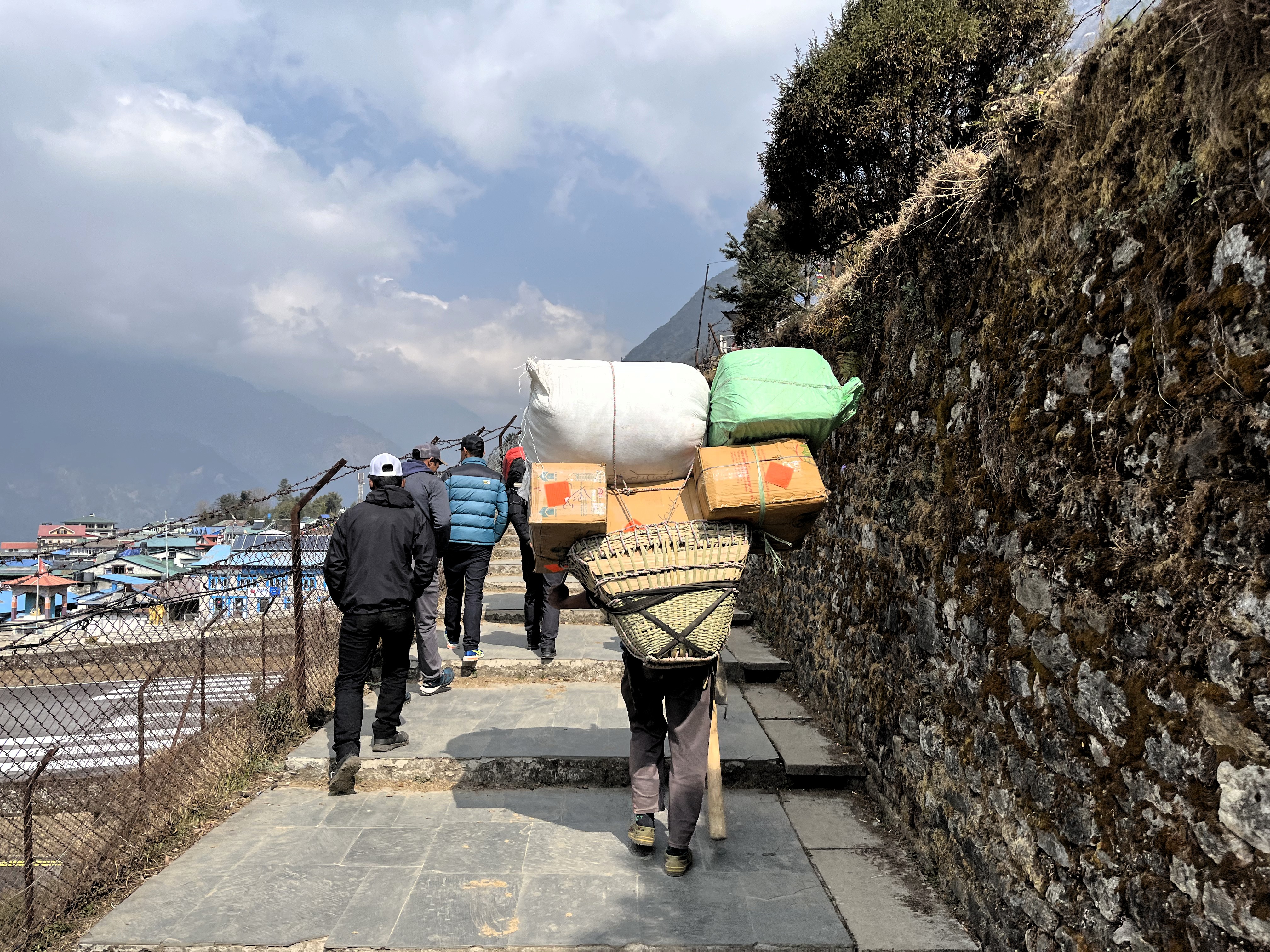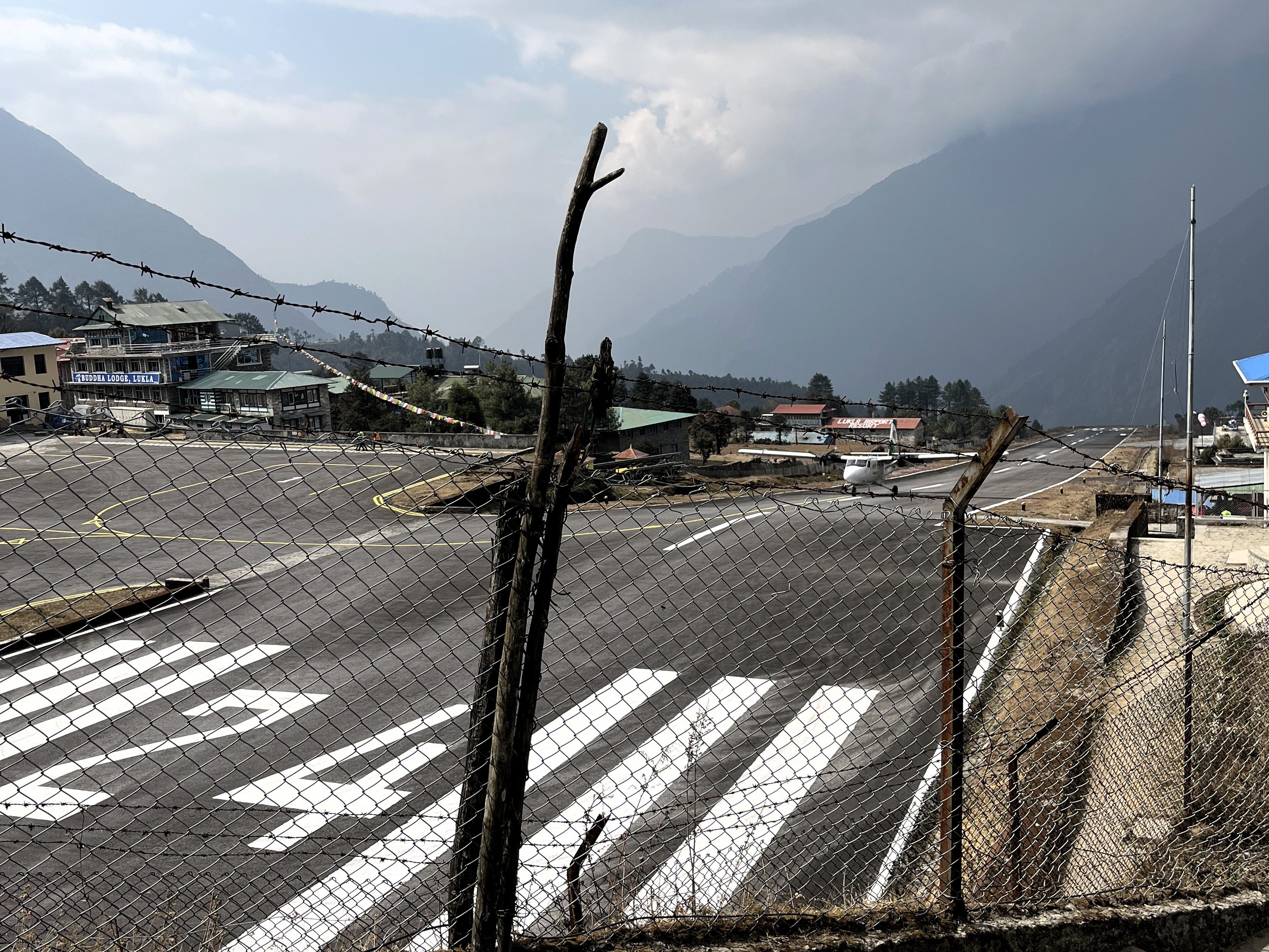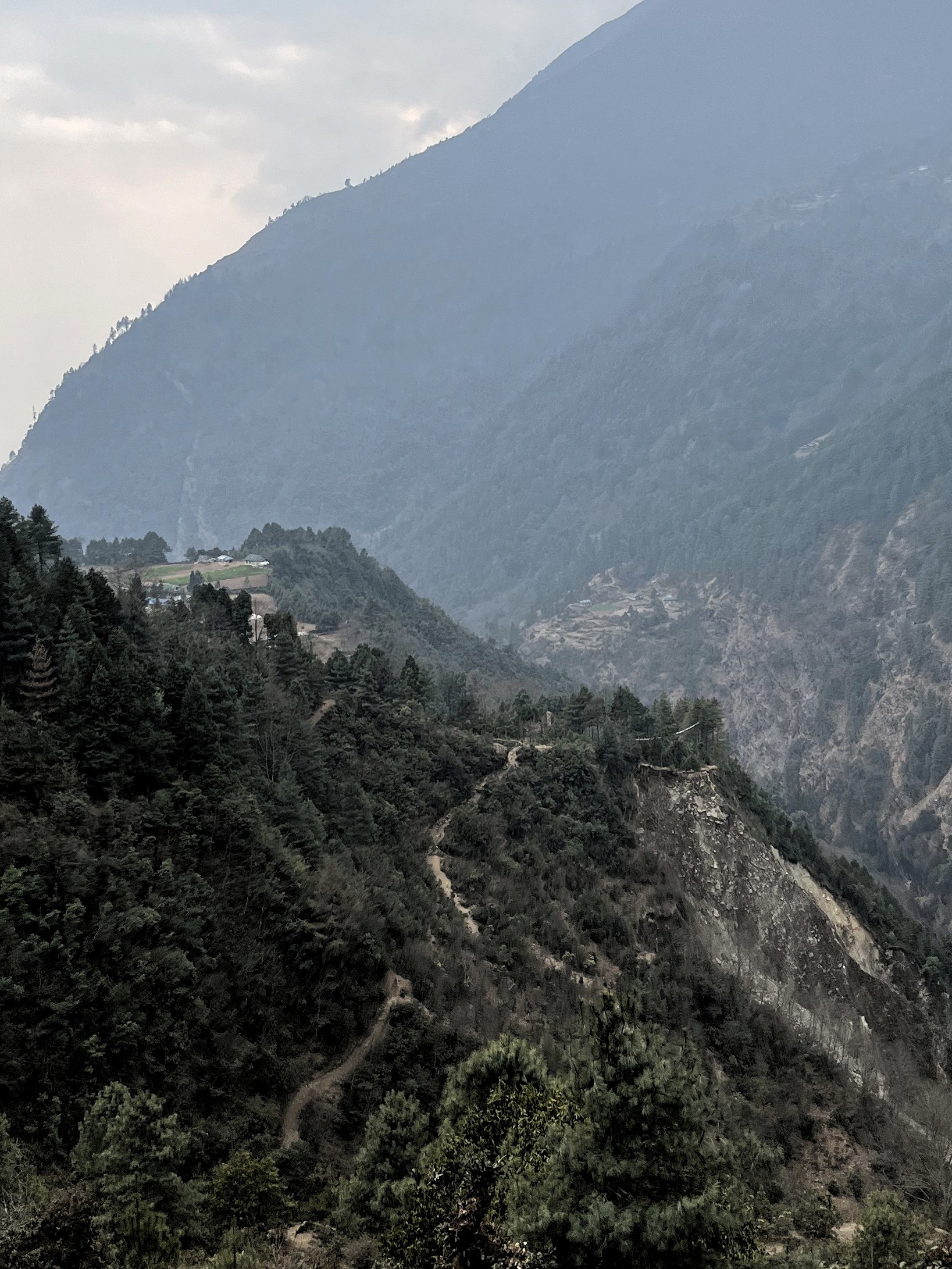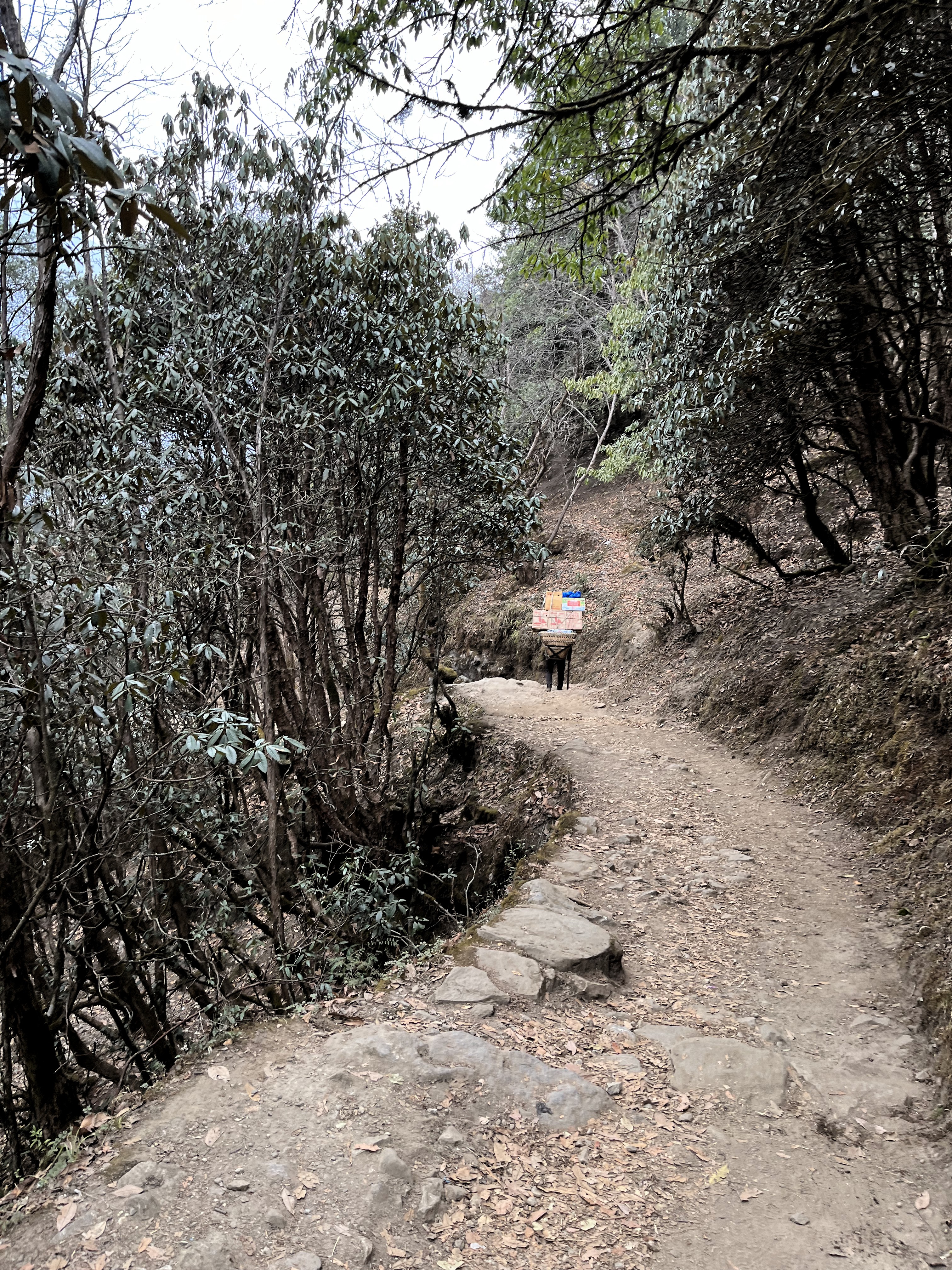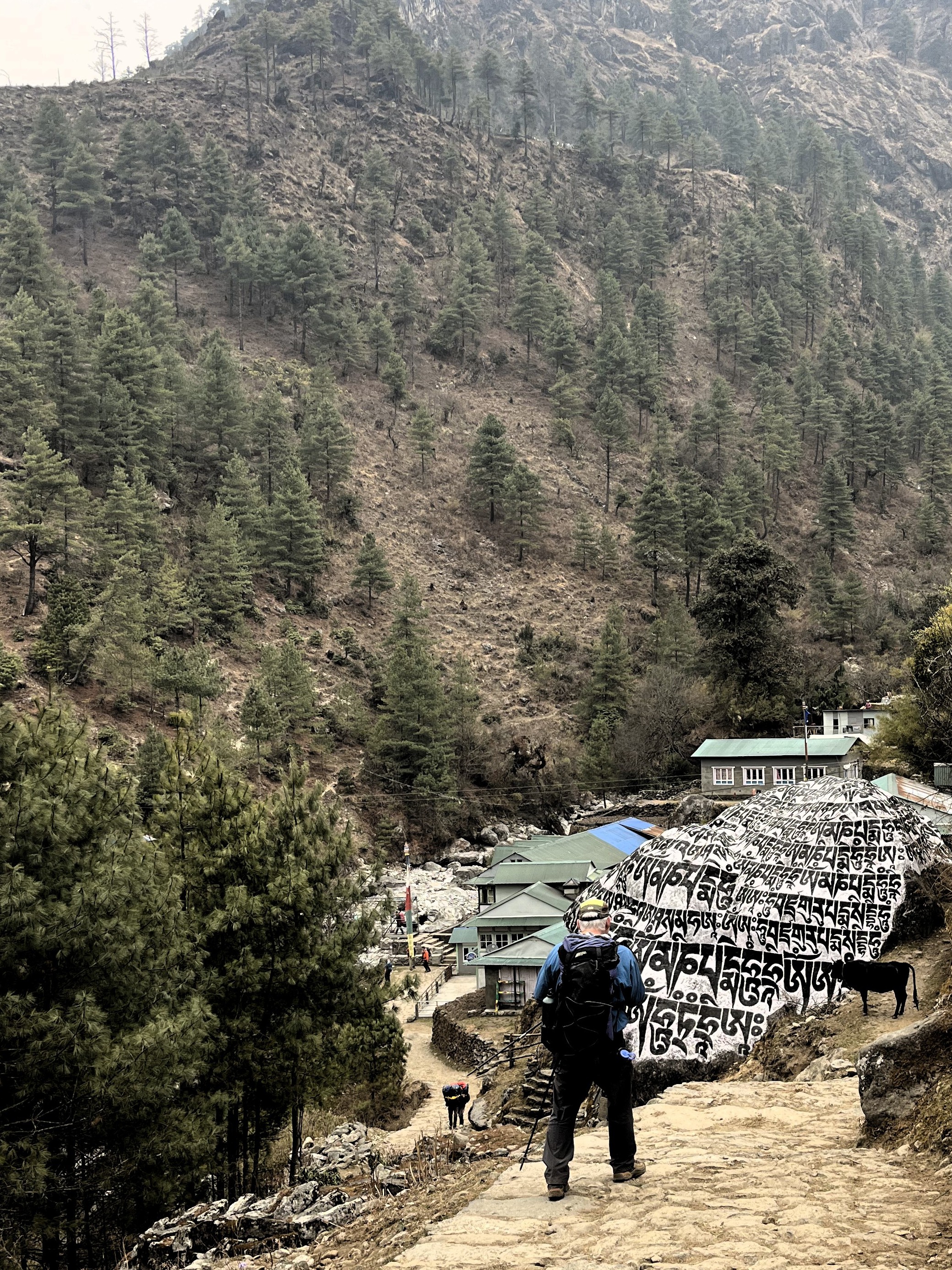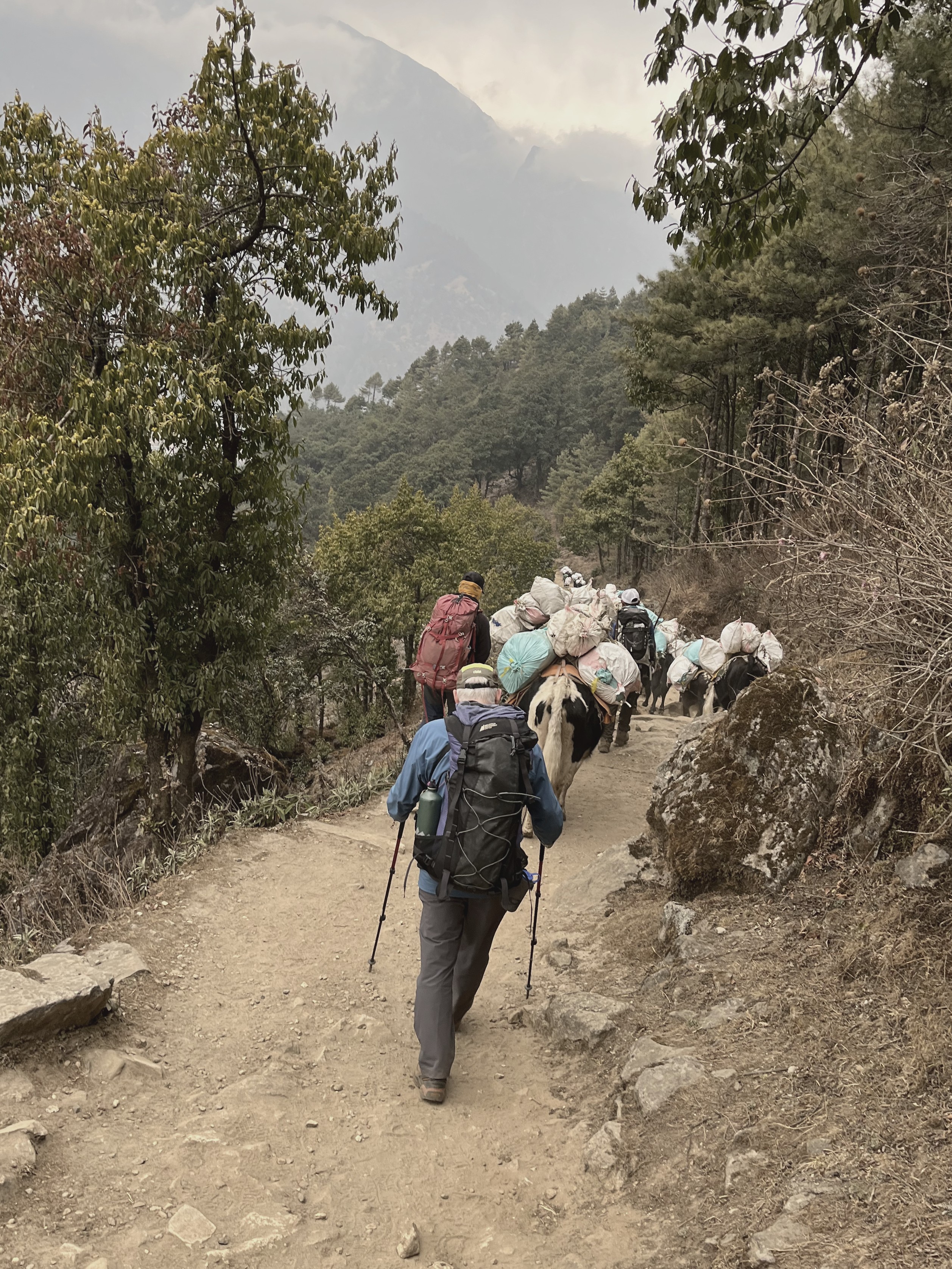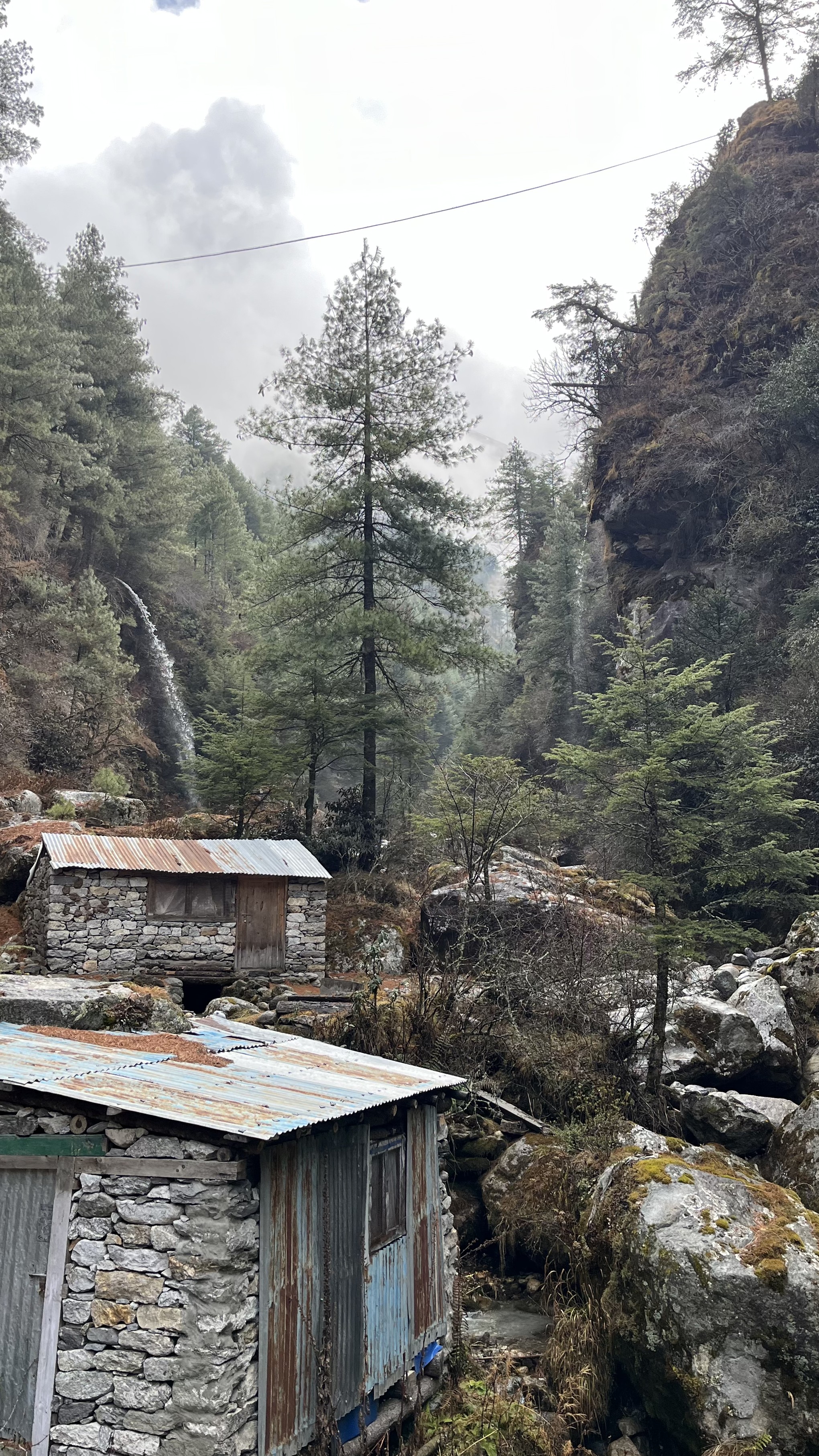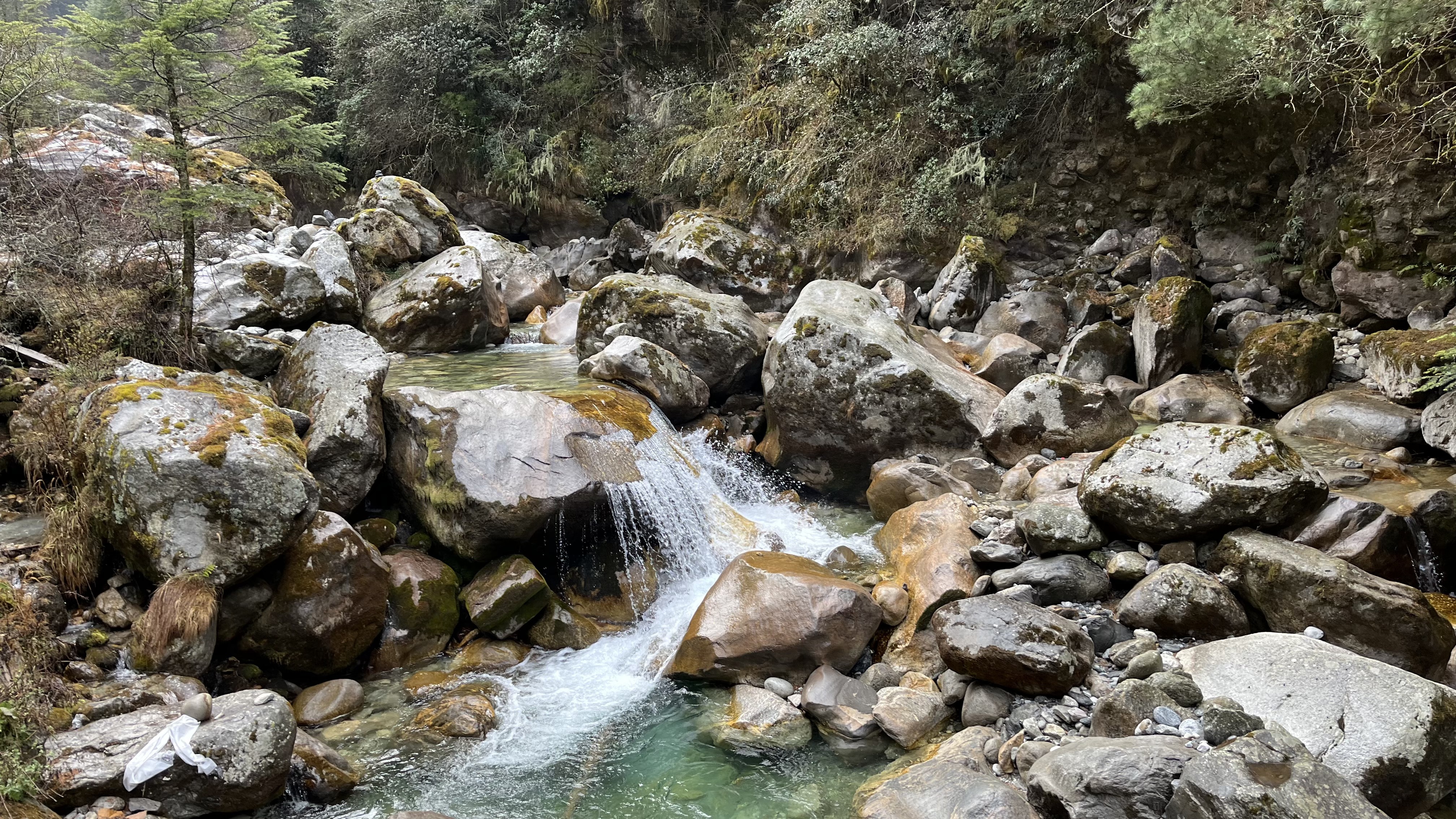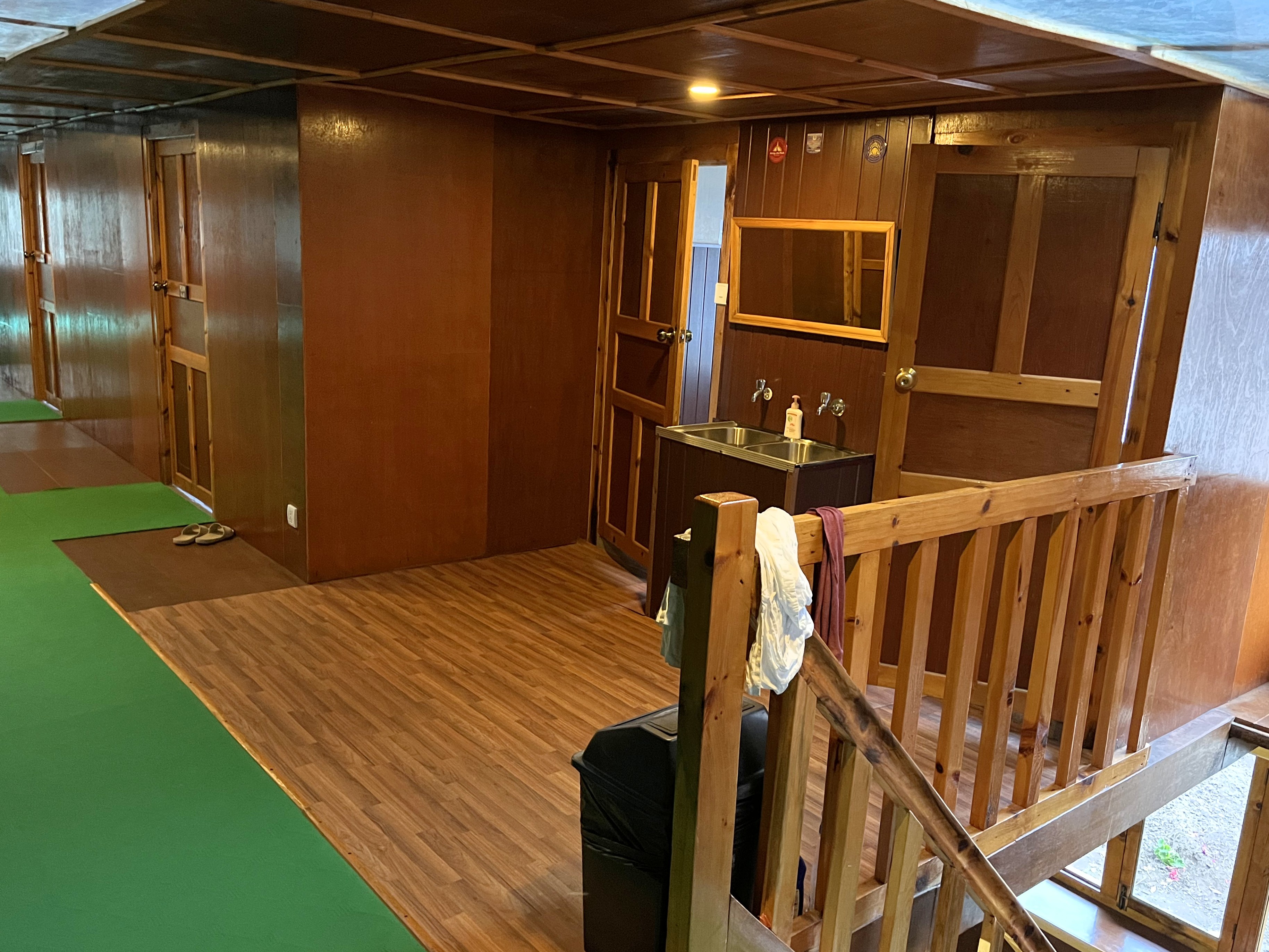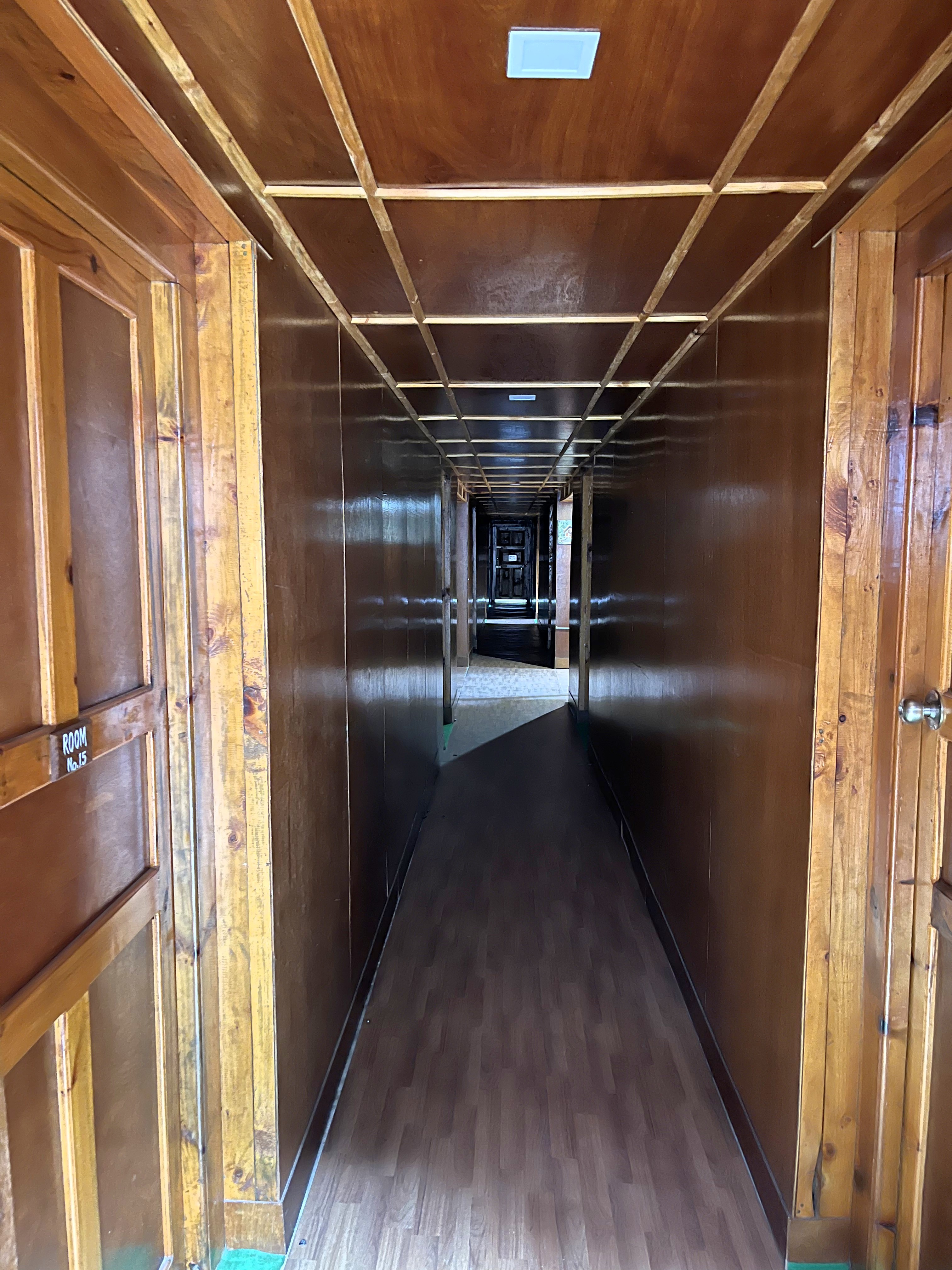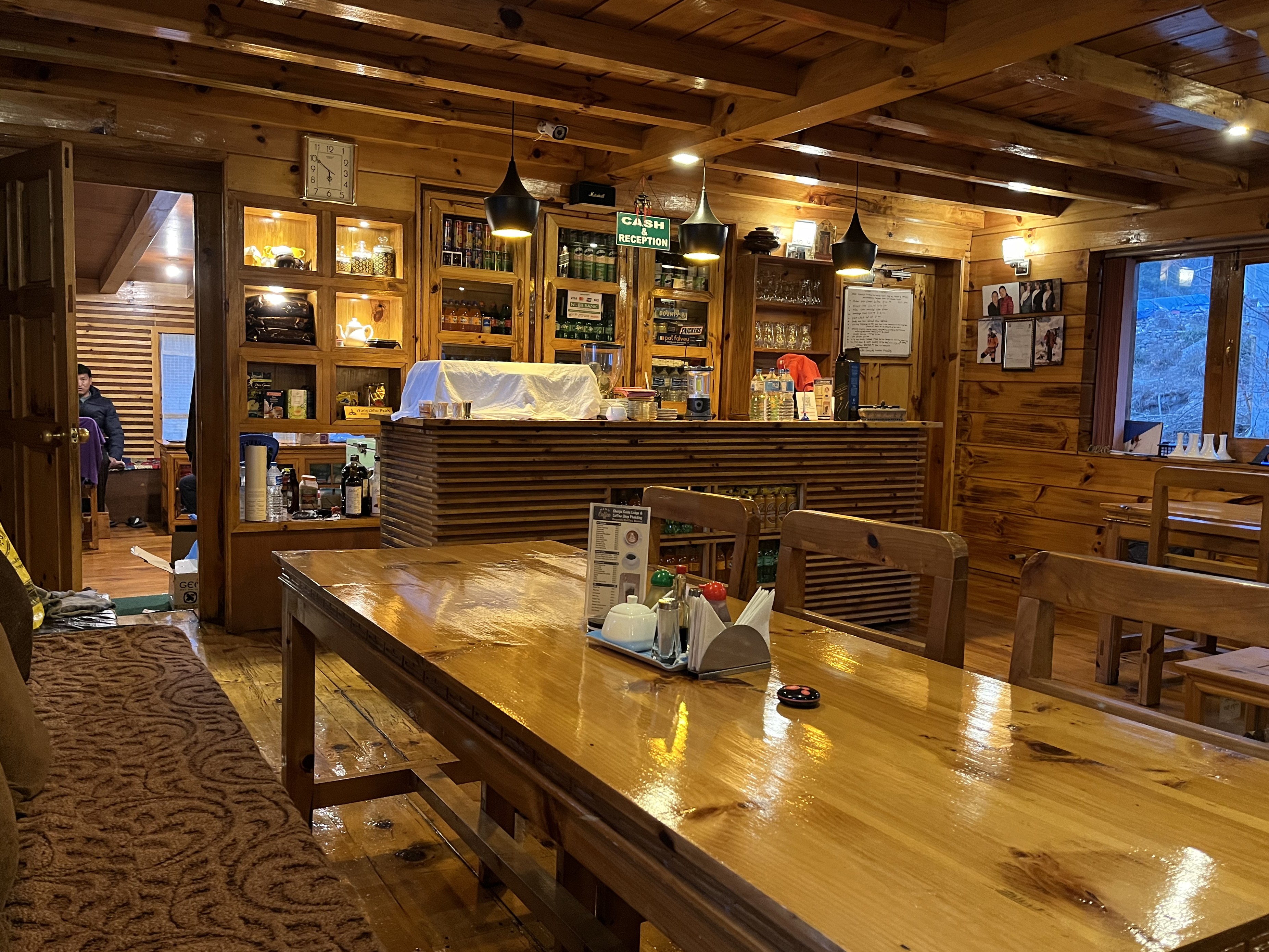Day 1: Kathmandu - Lukla - Phakding
We arrived at the airport in time to learn our flight had been delayed, as often for flights into Lukla Airport, which does not have a control tower or landing-guidance facilities. The runway is 527m/1,729ft long and 20m/66ft wide, rising by 11.7 degrees to help slow down the landing plane. This is not the world’s shortest, but is the highest civil airport runway, with one end dropping into a deep canyon and the other, facing a wall carved out of the mountain. If the plane touches down too early it will crash into the canyon, and too late (or the brake fails) will hit the mountain walls. When coming for landing, the pilot must commit to completing it since there is no chance of a go-around. Even in the best weather, there is only a window of a few hours in the morning for planes to land and take off. Wind shear, strong mountain gusts of winds, and even blown-over clouds could become safety hazards. Although it took only 30 minutes to fly from Kathmandu to Lukla, many hikers take four extra days to hike from Kathmandu to avoid flying. We chose to fly because we didn’t have the time.
Our plane was a Canadian-made DHC-8 with some 20 seats. It is the only fixed-wing aircraft that can land at Lukla. After being delayed by two hours we took off. In 20 minutes we started seeing mountain cliffs on both sides, so we knew we had entered the valley leading to the runway. The plane was getting bumpier and the cloud cover was also getting thicker. It was said that the last air disaster was due to a few clouds that blocked the view of the runway, and the pilot put down the plane too early so it hit the canyon wall and crashed… Just when my heart was about to jump out of my throat, a loud “thump” indicated that the wheels of the plane had touched the ground, followed by shrieking noises of heavy braking. The plane made a swift right turn and stopped steadily. A few passengers rushed straight to the airport bathroom after deplaning.
Having retrieved our backpacks, we trotted through the town, and officially started hiking to EBC.
The EBC trail goes up and down along the hills and rivers. We encountered some hikers, but many more porters, and convoys of yaks and horses, carrying heavy loads on the trail. There was no view of high, snow-covered mountains, but streams with rapids and waterfalls as well as the lush greens-covered trails presented very pleasing sights. We made it to Phakding, our first stop, in four or five hours.
Carrying a back-breaking load weighing about 15kg/33 lb had worn us out. We casually selected a newer-looking teahouse after confirming the room rate of 500 rupees for single occupancy (rupee/USD exchange rate was 130) and checked in. Later we learned that all the teahouses would charge the same (when the teahouse is busy, they may charge 1,000 rupees if you request single occupancy). Meals and drinks always cost more than lodging. Teahouses require you to eat their meals to avoid being doubly or triply charged for the room rate.
The food menus were similar in all teahouses, and the higher the elevation the higher the prices. The menu of this teahouse was extensive, including Dal Bhat (a combination of rice, beans, vegs, and roti), boiled or fried eggs, roast beef, stewed chicken, pork, and lamb, spaghetti, pizza, instant noodles, tea, western bread, coffee, soft drink… the menu was several pages long.
After dinner, we chatted with the teahouse owners for a while. The husband was a Sherpa who had scaled Mount Everest 9 times. They used the earnings and other savings to build this teahouse – a typical way for Sherpas to become financially secure. Because the house got cold very fast after sunset (my partner had turned down their offer to build a fire since we were the only guests that night), we retreated to our rooms to crawl into the warm sleeping bag. The house Wi-Fi was slow, and there was no cellphone signal. Thus far not only had we had a tough day hiking, but we also tasted the sub-freezing night inside the teahouse rooms – a typical experience repeated for this trip.


